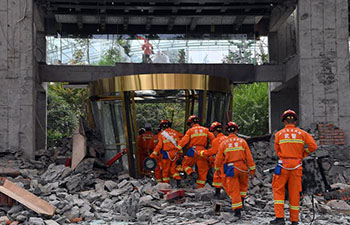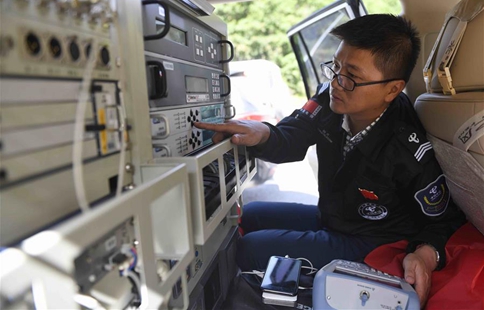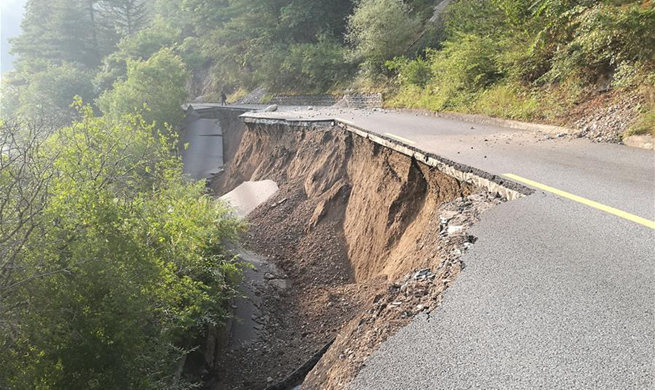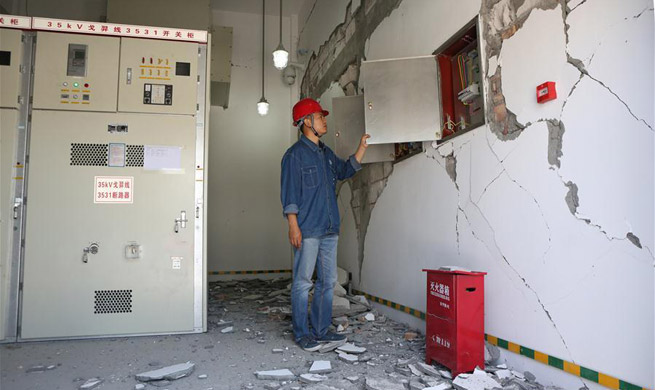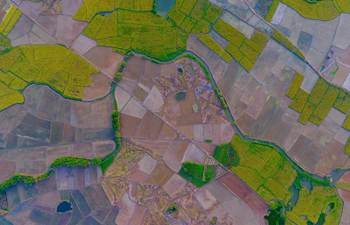BEIJING, Aug. 9 (Xinhua) -- A 7.0-magnitude earthquake struck the county of Jiuzhaigou in southwest China's Sichuan Province Tuesday night.
With rescue operations in full swing, Xinhua journalists have gathered some facts about the earthquake and the latest developments to provide a brief overview of the situation on the ground.
-- How serious was the earthquake?
The quake, measuring 7.0 on the Richter scale, hit Jiuzhaigou County at 9:19 p.m. Tuesday. The epicenter was recorded at a depth of 20 km below the township of Zhangzha. The population density of the county is 15 people per square km.
As of 8 p.m. Wednesday, 19 people had been confirmed dead while 247 reported injuries, including 40 in serious condition.
The number of casualties may continue to rise since rescuers have not yet reached all villages because some roads and communications remain cut off.
Seismologists warned that 6.0-magnitude aftershocks may strike in the coming days.
-- Where is Jiuzhaigou?
Jiuzhaigou is a popular tourist destination in the mountains on the eastern edge of Qinghai-Tibet Plateau. It is part of the Tibetan and Qiang Autonomous Prefecture of Aba and is known for its ethnic minority communities, mountainous landscape, and stunning scenery.
The Jiuzhaigou Nature Reserve covers 720 square km and includes plateau lakes, waterfalls and mountains. It has been open to tourists since 1984 and has seen visitor numbers rise each year. In 2016, it logged 5.14 million visits.
When the quake hit, tens of thousands of tourists were in Zhangzha. According to the disaster relief headquarters, some 60,000 people, most of them tourists, had been evacuated as of 4:30 p.m. Wednesday.
-- Why do so many quakes hit this part of China?
At least three major tectonic earthquakes have struck mountainous areas of Sichuan in the past decade.
In 2008, an 8.0-magnitude earthquake in Wenchuan claimed more than 80,000 lives. Five years later, a 7.0-magnitude quake hit Lushan, killing 196.
Jiang Haikun from the China Earthquake Networks Center said that although the quakes were not related, they all occurred on the same seismic belts and were caused by the crustal movement of the Bayan Har block of the Qinghai-Tibet Plateau, pushing toward the borders of the low-lying Sichuan Basin.
-- Are the tourist sites damaged?
The nature reserve was closed to the public early Wednesday.
Water was drained from the plateau lake, known as Wuhuahai or "five flower lake," during the earthquake. Some tourist facilities have been damaged, according to Sangye, an employee of the nature reserve. Small landslides have occurred.
However, authorities have denied claims that barrier lakes had formed at two popular tourist areas. They said it remains too early to tell the full scale of damage.
-- Are the pandas OK?
Sichuan Province is the main habitat for giant pandas and the location of China's leading panda breeding and research institutes.
China Conservation and Research Center for the Giant Panda (CCRCGP) reported Wednesday that pandas and staff at its base, 400 km from the quake epicenter, were not affected by the earthquake.
Preliminary checks confirmed that no pandas were injured and their breeding houses in the center's several reserves remained intact.
-- How are the rescue efforts progressing?
China has experienced devastating natural disasters in recent years and its rescue services have become extremely well prepared.
Rescue operations are now in full swing. A wide range of state units have been mobilized, including disaster relief, police, firefighters, armed forces, geologists, medical staff, infrastructure maintenance teams, transport authorities, and fuel suppliers.
Rescue dogs, life detectors, drones and laser sensors are among the equipment being used. Rescue teams are moving -- at times on foot -- to reach every village in the quake zone.
Sichuan has dispatched more than 1,300 armed police, 1,100 firefighters, 55 sets of heat sensors and 30 sniffer dogs to Jiuzhaigou.
A total of 455 firefighters from Shaanxi Province and 28 rescue workers from Gansu Province have also devoted themselves to the rescue. Enditem






